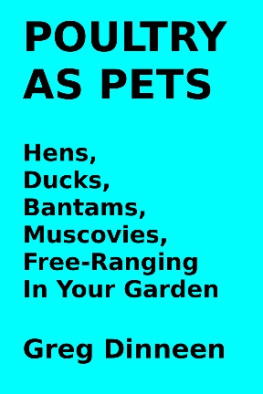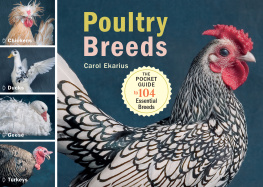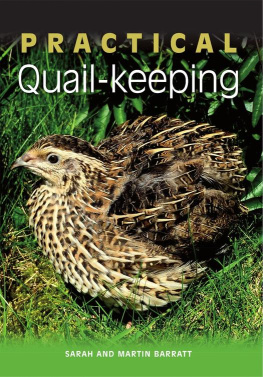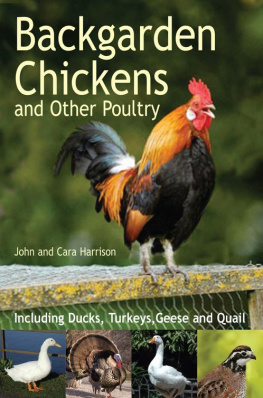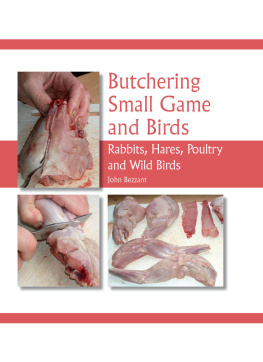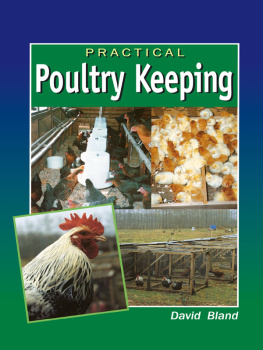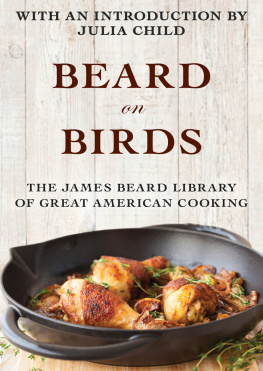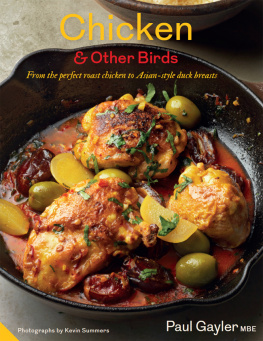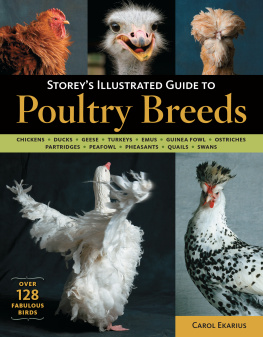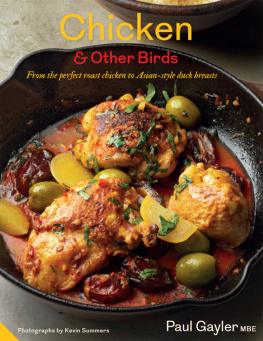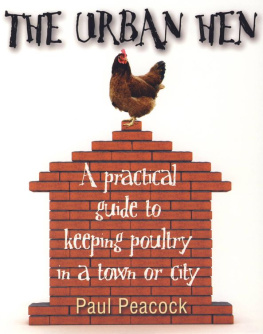Culinary BIRDS


2013 by John Ash and James O. Fraioli
Published by Running Press,
A Member of the Perseus Books Group
All rights reserved under the Pan-American and International Copyright Conventions
This book may not be reproduced in whole or in part, in any form or by any means, electronic or mechanical, including photocopying, recording, or by any information storage and retrieval system now known or hereafter invented, without written permission from the publisher.
Books published by Running Press are available at special discounts for bulk purchases in the United States by corporations, institutions, and other organizations. For more information, please contact the Special Markets Department at the Perseus Books Group, 2300 Chestnut Street, Suite 200, Philadelphia, PA 19103, or call (800) 810-4145, ext. 5000, or e-mail .
Library of Congress Control Number: 2013938633
E-book ISBN 978-0-7624-5065-7
9 8 7 6 5 4 3 2 1
Digit on the right indicates the number of this printing
Interior design by Debra McQuiston
Edited by Geoff Stone
Typography: DIN, Helvetica and Boton
Running Press Book Publishers
2300 Chestnut Street
Philadelphia, PA 19103-4371
Visit us on the web!
www.runningpresscooks.com



The Authors would like to personally thank: Chef John Hall and the extraordinary culinary team at Le Cordon Bleu College of Culinary Arts - Sacramento, California; Chef Richard Jensen II, Torrey Crable, Patricia Nicosia, Jenn Allen, Enjoli D. Crayton, Rita Evans, Ashanique Gaines, Joseph Gray, Gabriela Gutierrez, Shamara Jones, Danushka Jung-Maisel, Sonnie Keokesa, Elizabeth Miranda, Erin J. Shepherd, and Kempton Stafford. The terrific recipe testers Kainoa Raymond, Lorri Allen and Biff Owen. Photographer extraordinaire Jessica Nicosia-Nadler. Mike Leventini and Petaluma-Poultry. Andrea Hurst & Associates. Geoffrey Stone at Running Press/Perseus Books.

contents poultry
poultry (noun) \pol-tre\
Domesticated birds kept for eggs or meat.

BY MIKE LEVENTINI, PRESIDENT OF PETALUMA POULTRY
Poultry. Its a mainstay of the American diet. Its the low fat, nutritious, versatile and familiar protein that we all know and love. Its rich in protein, niacin, vitamin B6 and selenium, helps fight against bone loss, contribute to healthy circulation, support immunity, and even offer protection against cancer and heart disease. Although the mass production of poultry was developed in America, it was only less than a century ago that chickens were bred more for exhibition than consumption. The bird, today well known as a dinner table centerpiece, was once little more than a prized showpiece. It wasnt until around 1910 that raising chicken for eggs and meat began to trump raising them for show.
In 1928 when Herbert Hoover claimed that if he won the presidential campaign there would be a chicken in every pot, Americans were eating an average of only a half-pound of chicken a year. It wasnt until after World War II that the tides began to change. Food production became more industrialized, and the growing demand and need for affordability led to the implementation of large scale production methods. The farms and processing facilities became bigger and more efficient and the product more affordable to the consumerkeeping the cost of chicken down even in todays high-priced economy. Houses and cars cost fourteen times what they did fifty years prior, but the price of chicken hasnt even doubled. As Joel Stein with Time magazine wrote, that helps explain why we eat 150 times as many chickens a year as we did eighty years ago. In fact, according to the National Chicken Council, current chicken consumption per capita is around ninety pounds a year, over half a bird a week. And while chicken was more expensive than steak or lobster one hundred years ago in the United States, it may now be cheaper than the potatoes its served with.
I came to learn the impact of free range, vegetarian feed, and antibiotic-free husbandry practices on the quality and taste of poultry...you are what you eat, began to make a whole lot of sense, as you can taste that adage in every bite.
The low-cost production system came with benefits, such as making poultry more accessible to the average consumer, but it also led to significant issues. Animals were raised in crowded environments, farms became reliant on growth promotants, antibiotics were used as a preventative means to keep livestock healthy, and low-cost feed formulations including animal byproducts became the standard. Unfortunately, animal welfare considerations took a back seat to saving money at what were seen as factory farms in the eyes of some consumers, and waterway pollution and employee welfare became issues needing to be addressed.
Not only did the farming methods change, but the form of poultry changed as well. As little as thirty years ago, the majority of poultry was sold as bulk, either whole or cut up. Now, you can buy your poultry in a tray or box, raw or cooked, chopped, formed, sliced or diced. While there have always been birds raised on small farms or in backyards by farmers who have shunned these large-scale methods and kept old fashioned breeds and flavor profiles, it was certainly hard to find them other than at your local farmers market.
Numerous food safety issues and a mad cow outbreak later, consumers were forced to care more about how their animals are raised, what happens from the farm to the fork, and whats behind terms such as free range, organic, antibiotic free, and vegetarian fed.
Similar to John Ash, I grew up around livestock and was involved in 4H and the FFA (Future Farmers of America). My dad is a retired high school agriculture teacher and his small farm is a place of fond memories for me and my children. Ive been raising poultry for twenty-three years, but it wasnt until about eight years ago, when I joined the team at Petaluma Poultry, that I learned the saying a chicken is chicken is by no means valid.
Next page

